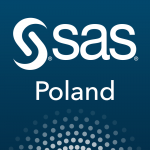 One of the most frequent questions I’m asked by my students is which business analytics books to read to support their professional self-development.
One of the most frequent questions I’m asked by my students is which business analytics books to read to support their professional self-development.
It is always hard to pick out the best books, especially because I like to mix classics and domain-specific references. I particularly like those that influence business analytics, which is my day-to-day business. This list is very personal, and is very much the books that inspire me, but I hope it might also inspire others.
I have divided my Top 10 Analytics Books into three groups. The first group, covered by this article, is about the use of analytics in general business. These books can be read and understood by both business leaders and quantitative analysts. You won’t find many (if any) mathematical formulas, but instead, will discover exciting applications of analytics that have changed the way the world works today.
Competing on Analytics: The New Science of Winning – Thomas Davenport
Competing on Analytics is now 10 years old, and is very much an analytics classic. This is a definitely a must-read book for anyone interested in business analytics. The book provides leaders with a recipe for competing on analytics to support business. Personally, I like Davenport’s concept of five stages of analytical competition, which starts with analytically impaired, moving through localized analytics, analytical aspirations, and analytical companies before reaching analytical competitor. This rings true for me, because I have seen many of our clients from SAS Institute Poland move along this path. If you are in a hurry and want a short version of this book, you might want to read Davenport’s article from Harvard Business Review, with the same title. I also strongly recommend that you follow.
Secrets of Analytical Leaders. Insights from information insiders. – Wayne Eckerson
This is a new addition to the analytics library. It’s not actually a book in the classical sense, but a collection of interviews with analytical leaders from all areas of business, both start-ups and established companies. The interviews cover all important aspects of analytical lifecycle, from data preparation, through data exploration and visualization, and predictive analytics to system monitoring and maintenance. The interview format makes it easy to dip into, which is great if you do your reading in small chunks.
I especially enjoyed chapter 16 on deploying analytical models. I have been speaking at conferences recently on the importance of the analytics lifecycle embracing both development and deployment, so this chimed with me. To my mind, the real challenge is in deploying your models once developed, but this is not at all the classical view, with its focus on development. There is plenty of analytics software that supports model development, but very little to support both development and deployment. If you want to know more about looking across the whole analytics lifecycle, read this post from one of my SAS Institute colleagues on “3 principles of competing on analytics”.
Analytics in a Big Data World: The Essential Guide to Data Science and its Applications - Bart Baesens
Baesens is a huge name in both academia and business. He has published at least a dozen analytics books and I can honestly recommend all of them, but this is probably the best starting point. It will introduce you to: descriptive, predictive, and prescriptive, setting out both applications and details of statistical methods.
I especially like the last chapter, on applications. My favorite application is uplift modelling, which is sometimes called incremental, true lift or net modelling. It is about measuring the true impact of what you do on customer behavior. The technique is less about a statistical method, and more about data collection. It reminds us that sometimes we need a randomized experiment (otherwise known as a pilot) to collect data and predict the consequences of our actions. The data itself without the experiment might be less use. This is similar to the A/B testing used to evaluate changes in web marketing. Baesens chairs Data Mining, Data Science and Analytics Research, and he is definitely worth following on Twitter.
A Practitioner’s Guide to Business Analytics – Randy Barlett
I love this book, because I like to read about my job. This is a book about analytics from the human resource perspective and answers questions about what kind of people are needed for analytics. It describes what is needed to create a Center of Analytics Excellence in-house and how to support it with outsourced vendors and consultants. It also looks right across the analytical lifecycle from identifying and developing clients' business needs for apps through framing problems as models, doing your data analysis, interpreting the results, and turning those into decisions.
Read my next post for more books, this time about how to get to grips with business analytics.

1 Comment
Pingback: My top analytics books - 2. How-to guide to business analytics